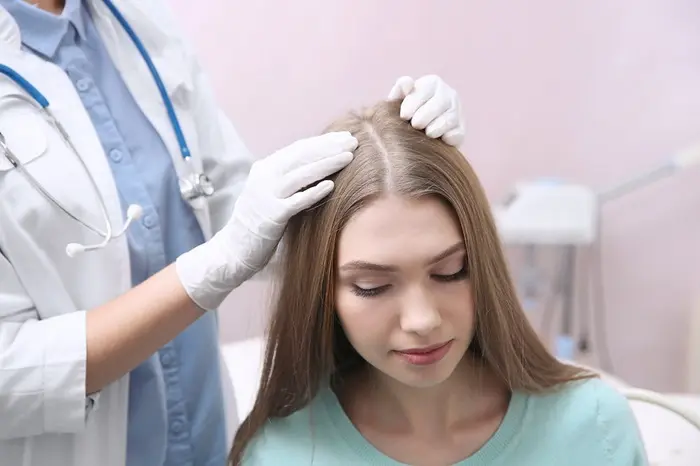Artificial hair transplant is a growing field in the world of cosmetic surgery, offering people with hair loss a chance to regain their natural appearance. It is a revolutionary technique that uses synthetic hair to create fuller, thicker hair for individuals suffering from hair thinning or baldness. While traditional hair transplants often rely on a person’s natural hair follicles, artificial hair transplants use synthetic fibers to enhance the look of hair. This procedure is particularly popular among individuals who may not be candidates for conventional hair transplant methods due to insufficient donor hair. By providing an alternative, it allows people to achieve the desired look without having to wait for hair growth or deal with the complexities of grafting.
Understanding Hair Transplant Types
When considering a hair transplant, there are several options available, each offering distinct advantages. These methods are designed to address various forms of hair loss, whether it’s due to genetics, age, or lifestyle factors. The Hair Transplant Types can be classified into a few different categories:
1. Follicular Unit Transplantation (FUT)
FUT is a traditional method where a strip of scalp with healthy hair follicles is removed and transplanted to the thinning or bald areas. This method leaves a linear scar but is suitable for individuals with ample donor hair.
2. Follicular Unit Extraction (FUE)
FUE involves removing individual hair follicles from the scalp and transplanting them one by one to the desired areas. This method is less invasive and leaves minimal scarring, making it a popular choice among patients seeking a more discreet procedure.
3. Robotic Hair Transplant
Robotic hair transplant is a more advanced method where robots assist in the extraction and implantation of hair follicles. This method ensures precision and minimal scarring, enhancing the efficiency of the procedure.
The Process of Artificial Hair Transplant
The artificial hair transplant process involves a few essential steps that ensure the successful implantation of synthetic fibers. The initial consultation is critical in determining the right course of action based on the patient’s condition and goals. Here’s an overview of the general procedure:
Step 1: Consultation and Assessment
Before any procedure, patients undergo a thorough assessment by a specialist who examines the extent of hair loss, scalp condition, and medical history. During this consultation, the doctor will explain the available options, including synthetic hair implants.
Step 2: Preparation of the Scalp
The scalp is cleaned and numbed with local anesthesia. Depending on the procedure, the area where the synthetic hair will be implanted is prepped. For artificial hair implants, the synthetic hair strands are custom-made to match the patient’s natural hair color and texture.
Step 3: Implantation of Artificial Hair
The synthetic hair fibers are carefully implanted into the scalp using specialized needles. These fibers are designed to look like natural hair and blend seamlessly with the surrounding follicles, giving the appearance of a fuller hairline.
Step 4: Aftercare and Healing
After the procedure, patients are given detailed aftercare instructions. The scalp may experience mild swelling or discomfort, which typically resolves within a few days. Patients are advised to avoid strenuous activities and keep the scalp clean to promote healing.
Benefits of Artificial Hair Transplant
Artificial hair transplants offer numerous benefits, especially for individuals who have been unable to achieve desired results with traditional methods. Some of the main advantages include:
Quick Results: Unlike traditional methods where hair grows gradually, artificial hair provides immediate results, allowing patients to enjoy a fuller hairline right after the procedure.
Non-invasive: This method is minimally invasive, meaning patients experience little downtime and can return to their normal activities sooner.
Durability: The synthetic hair used in the procedure is designed to be durable and long-lasting, ensuring that the results are stable over time.
Considerations and Risks
While artificial hair transplants offer several advantages, it’s important to consider the risks and potential drawbacks before opting for this procedure. Some risks include:
Allergic Reactions: In some cases, patients may experience allergic reactions to the synthetic fibers, leading to irritation or swelling.
Long-term Maintenance: Artificial hair transplants require ongoing care and maintenance to keep the hair looking natural and to avoid complications.
Risk of Infection: As with any surgical procedure, there is always a risk of infection if proper aftercare instructions are not followed.
Conclusion
Artificial hair transplant is a promising solution for individuals experiencing significant hair loss. It offers an immediate, effective, and minimally invasive alternative to traditional hair transplant methods. However, like any cosmetic procedure, it comes with its own set of benefits, risks, and maintenance requirements. Consulting with a qualified plastic surgeon is essential to determine if this procedure is the right choice based on your individual needs and expectations. If you’re looking to explore more about different hair transplant types, it is important to research all available options to make an informed decision about your hair restoration journey.
Related Topics
- 4 Methods To Hide My Head After Hair Transplant
- 4 Effects of Hair Transplantation on the Skin System
- 5 Best Hair Transplant Clinics In The World


